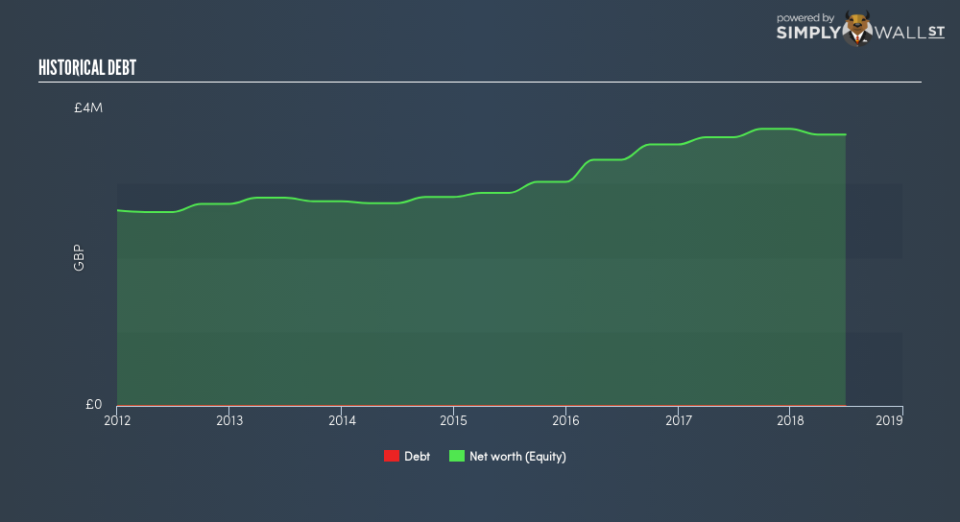Stilo International plc (LON:STL): Time For A Financial Health Check

Stilo International plc (LON:STL), which has zero-debt on its balance sheet, can maximize capital returns by increasing debt due to its lower cost of capital. However, the trade-off is STL will have to follow strict debt obligations which will reduce its financial flexibility. While STL has no debt on its balance sheet, it doesn’t necessarily mean it exhibits financial strength. I will go over a basic overview of the stock’s financial health, which I believe provides a ballpark estimate of their financial health status.
See our latest analysis for Stilo International
Does STL’s growth rate justify its decision for financial flexibility over lower cost of capital?
Debt funding can be cheaper than issuing new equity due to lower interest cost on debt. But the downside of having debt in a company’s balance sheet is the debtholder’s higher claim on its assets in the case of liquidation, as well as stricter capital management requirements. STL’s absence of debt on its balance sheet may be due to lack of access to cheaper capital, or it may simply believe low cost is not worth sacrificing financial flexibility. However, choosing flexibility over capital returns is logical only if it’s a high-growth company. STL delivered a negative revenue growth of -5.9%. While its negative growth hardly justifies opting for zero-debt, if the decline sustains, it may find it hard to raise debt at an acceptable cost.
Can STL pay its short-term liabilities?
Given zero long-term debt on its balance sheet, Stilo International has no solvency issues, which is used to describe the company’s ability to meet its long-term obligations. However, another measure of financial health is its short-term obligations, which is known as liquidity. These include payments to suppliers, employees and other stakeholders. At the current liabilities level of UK£472k liabilities, the company has been able to meet these obligations given the level of current assets of UK£1.7m, with a current ratio of 3.61x. Having said that, many consider anything above 3x to be quite high and could mean that STL has too much idle capital in low-earning investments.
Next Steps:
Having no debt on the books means STL has more financial freedom to keep growing at its current fast rate. Since there is also no concerns around STL’s liquidity needs, this may be its optimal capital structure for the time being. In the future, its financial position may change. This is only a rough assessment of financial health, and I’m sure STL has company-specific issues impacting its capital structure decisions. You should continue to research Stilo International to get a more holistic view of the stock by looking at:
Future Outlook: What are well-informed industry analysts predicting for STL’s future growth? Take a look at our free research report of analyst consensus for STL’s outlook.
Historical Performance: What has STL’s returns been like over the past? Go into more detail in the past track record analysis and take a look at the free visual representations of our analysis for more clarity.
Other High-Performing Stocks: Are there other stocks that provide better prospects with proven track records? Explore our free list of these great stocks here.
To help readers see past the short term volatility of the financial market, we aim to bring you a long-term focused research analysis purely driven by fundamental data. Note that our analysis does not factor in the latest price-sensitive company announcements.
The author is an independent contributor and at the time of publication had no position in the stocks mentioned. For errors that warrant correction please contact the editor at editorial-team@simplywallst.com.

 Yahoo Finance
Yahoo Finance 
